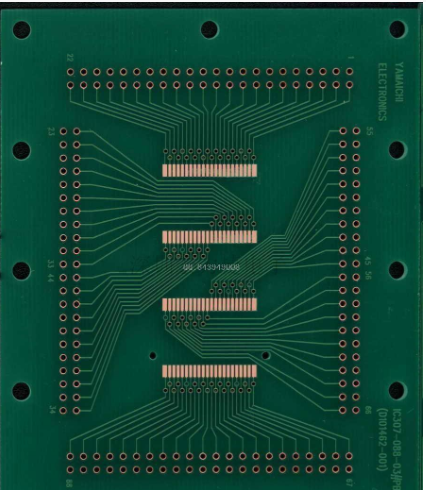This article is mainly to share the characteristics of the fpc connector and some of its materials.
One: Advantages of fpc connector:
One: FPC connector is characterized by high density, small size, light weight, 7~129 cores, 9 hole arrangement, FPC connector FH23 specification series features: space-saving design: connector height is 1.0mm The mounting area and depth is 3.2 mm. The 0.6 mm terminal pitch on the solder terminals, the existing front and back connectors.
Second: FPC connector. YF52 (6.3mm. 2.0mm110°) adopts front locking structure. FPC/FFC is most suitable for digital machines, and other uses are more extensive.
fpc connector
Two: fpc connector material
1. Conductor
The fpc connector copper foil is suitable for use in flexible circuits. It can be electrodeposited or plated. One side of the electrodeposited copper foil has a glossy surface, while the processed surface on the other side is dull and dull. It is a flexible material that can be made into many thicknesses and widths. The matte side of ED copper foil is often specially treated to improve its bonding ability.
2. Insulating film

There are many types of insulating film materials for fpc connectors, but the most commonly used are polyimide and polyester materials. At present, nearly 80% of all flexible circuit manufacturers in the United States use polyimide film materials, and about 20% use polyester film materials. Polyimide material is non-flammable, geometrically stable, has high tear strength, and has the ability to withstand welding temperature. Polyester, also known as polyethylene bis- stupidate, has similar physical properties Compared with polyimide, it has a lower dielectric constant and absorbs little moisture, but it is not resistant to high temperatures. Polyesters have a melting point of 250°C and a glass transition temperature (Tg) of 80°C, which limits their use in applications that require a large amount of end welding. In low temperature applications, they exhibit rigidity. Nevertheless, they are suitable for use in products such as phones and other products that do not need to be exposed to harsh environments.
3. Adhesive
In addition to bonding the insulating film to the conductive material, the adhesive can also be used as a covering layer, as a protective coating, and as a covering coating. The main difference between the two lies in the application method used. The cover layer is bonded to the cover insulating film to form a circuit with a laminated structure. Screen printing technology used for covering and coating of adhesive.
Three: fpc connector life
It is generally difficult to accurately determine the standard measurement time required for the test data of the fpc connector and the specific application. Under the expected use temperature, the test time between 1000h and 3000h can be used to evaluate the characteristic data of automotive electronic products. People began to pay more and more attention to the characteristic data outside 3000h, that is, 3000~5000h (equivalent to the service life of 150,000 miles). The calculation of the test data (without considering the change of the slope) may lead to an overestimation of the life of the contact, and the overestimation will increase correspondingly with the extension of time. The semi-logarithmic graphical representation of data at a certain temperature is currently the most widely used, and its need is the most urgent. This is also the easiest way to compare various materials for a particular application. The data calculated by the fpc connector test should be carefully checked, and attention should be paid to the possibility of overestimation of the final life.
Most of the FPC connectors adopt the design technical requirements of level 3 or 1, and the working temperature of the fpc connector of the car is expected to increase to. It's just that most non-automotive connectors don't seem to need to maintain their stability under the above conditions. However, high-density FPC connectors require lower initial mating force, which in turn reduces the amount of stress relief. This makes stress relief an important feature even at lower temperatures.